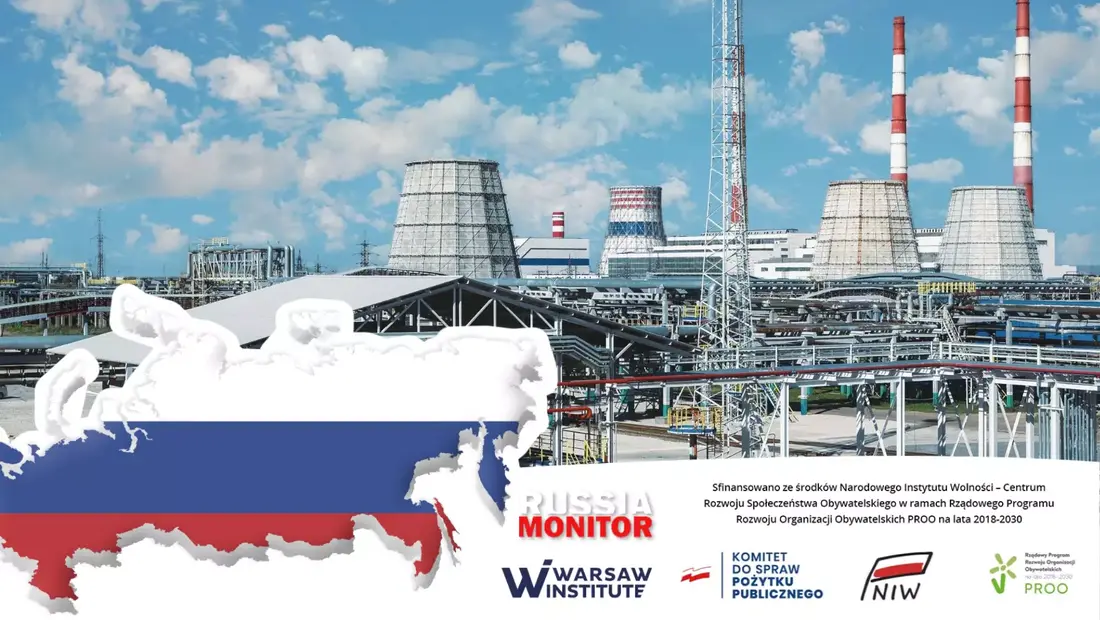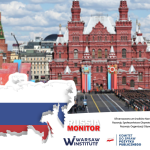
Russia Monitor is a review of the most important events related to Russian internal and external security, as well as its foreign policies.
Date: 28 September 2023 Author: Grzegorz Kuczyński
As OPEC+ Strategy Thrives, Russia Has Money to Wage War
The price of Brent crude, the international benchmark, has gained about 30 percent in late Q3 this year. The biggest beneficiary is Russia while Saudi Arabia––by drastically curbing its crude output––has also played its part. The cartel is likely to impose further curbs as the strategy of reducing output and releasing less crude to the market has proved successful. The question is how long Riyadh will continue such a policy that might result in a gradual loss of Asian markets in favor of cheaper Russian oil.

With crude prices soon going above the $100 per barrel mark, a joint Russian and Saudi plan to curb oil output has proved its efficiency, Russian independent news site The Bell reported. Soaring crude prices will be vital for Russia’s budget next year to deliver its defense spending plan as the costs of the war in Ukraine spiral and place growing strain on Moscow’s finances. According to The Wall Street Journal, soaring oil prices have mitigated a decline in exports. Russia has generated an extra $2.8 billion in oil revenue this quarter compared to the April through June period, according to Energy Aspects estimates. Saudi Arabia, meanwhile, has likely pulled an extra $2.6 billion over that time frame. OPEC+ began cutting production in October of last year, amounting to a 2 million bpd decrease in production. In April, members of the cartel agreed to an additional 1.66 million bpd in voluntary cuts. Saudi Arabia and Russia on September 5 agreed to extend their voluntary oil production cuts through the end of the year, according to The Bell. The scheme was risky: while curbing output, a top crude producer loses share in the market and both states will face a gap in export revenues––provided that the deficit does not raise crude prices. The risk paid off, though. Until this summer, a decline in oil supply went hand in hand with soaring crude prices. Brent crude rose 28 percent, from $75 to $95, from July 1 to September 28. Urals crude prices have been rising steadily despite sanctions while the price spread between Urals crude oil and the Brent crude benchmark has been narrowing gradually. In early 2023 the price differential between Urals and Brent was $34 per barrel as Urals traded less than $50 per barrel. Now Urals crude blend trades at $77 per barrel so the price differential narrowed down to just $11. Defense spending will account for 6 percent of Russia’s gross domestic product, or 10.8 trillion roubles, in 2024, the government’s draft plans show. To allocate funds for Russia’s war machine as well schools, healthcare, and special services, according to Russian budget calculations, Brent crude blend must trade at $85 while Urals––$71 per barrel, The Bell reported.
Support Us
If content prepared by Warsaw Institute team is useful for you, please support our actions. Donations from private persons are necessary for the continuation of our mission.
All texts published by the Warsaw Institute Foundation may be disseminated on the condition that their origin is credited. Images may not be used without permission.
















